
views
- Eat fruits and veggies in moderation, and stick to options that are low in fructose such as bananas, strawberries, avocados, and spinach.
- Avoid foods with lots of added sugars. These include sugary cereals, flavored yogurts, and many pre-made sauces and condiments.
- Eat bread that is gluten- and wheat-free. Rice bread, potato bread, and spelt sourdough are all good options.
- Choose sugar-free drinks and avoid alcohol.
Stay away from high-fructose fruits.
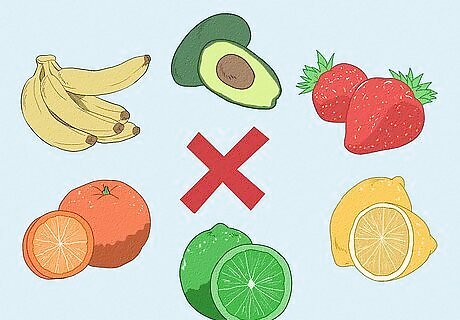
Apples are one of the biggest offenders out there. While fruit is fine to eat in moderation, high-fructose fruits like mango, pear, watermelon, grapes, and raisins will only leave you with gut pain and other uncomfortable symptoms. Instead, stick with low-fructose fruits, like: Lemons and limes Bananas Cranberries Mandarin oranges Strawberries Avocados Dieticians advise only eating 1-2 baseball-sized servings of fruit each day to help keep your symptoms away.
Steer clear of high-fructose veggies.

Onions, asparagus, and other veggies are full of fructose. Veggies like artichokes, broccoli, leeks, mushrooms, shallots, red peppers, peas, and okra are known to cause unpleasant flare-ups for fructose-intolerant individuals. Stock up on plenty of low-fructose veggies instead, such as: Sweet potato Turnip greens Spinach Green pepper Chives Dieticians advise eating no more than 3 servings of veggies each day on a low-fructose diet. For reference, one serving of vegetables equals 1 cup of leafy greens or a ½ cup of any frozen, fresh, or canned veggies.
Limit flavored dairy products.
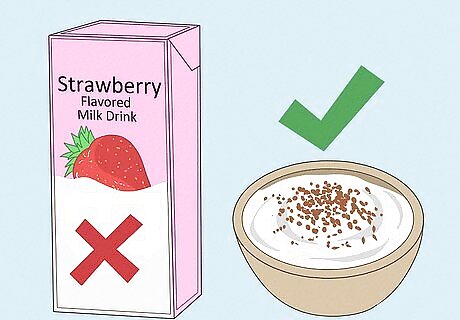
Dairy products like flavored milk and yogurt can be high in fructose. Dairy items with fruit flavoring are also high in added sugar and fructose-containing products—even products flavored with natural fruit. To be safe, stick with plain dairy products instead. If you want to add some flavor to your yogurt, mix in natural flavors and spices like vanilla or cinnamon.
Skip sugary cereals.
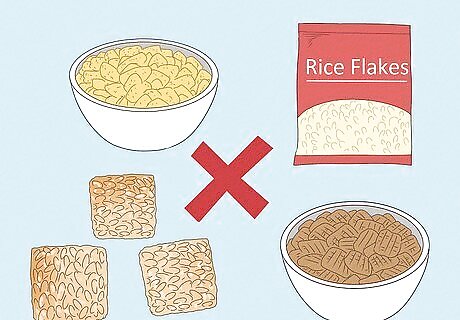
Shop for low-fructose cereals with less than 6 grams of sugar per serving. Make sure that the sugar or sweetener ingredient is towards the bottom of the ingredients list, too. Here are a few safe, low-fructose varieties to choose from: Cornflakes Frosted Flakes Crispix Rice Krispies or Frosted Krispies Oatmeal, oat-based cereals, and porridge are also safe options if you’re on a low-fructose diet.
Ditch ready-made meals and desserts.
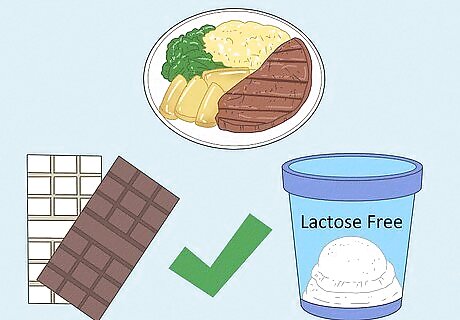
Strive to eat meals you prepare for yourself at home. Homemade meals are better than boxed dinners or other microwavable meals, which are often made with high-fructose corn syrup. Also, try to avoid any commercial baked goods and desserts, which are often high in fructose. In moderation, chocolate can be a great dessert option on a low-fructose diet. Dieticians suggest limiting yourself to 5 squares of dark chocolate, 4 squares of milk chocolate, or 3 squares of white chocolate. A bowl of lactose-free ice cream is another refreshing, low-fructose dessert alternative.
Toss out any high-fructose snacks.
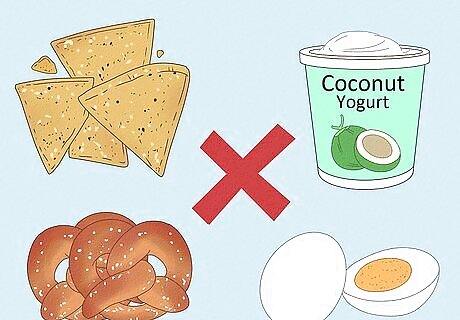
Fruit leathers, muesli bars, and dried fruit are all bad news. Thankfully, there are plenty of low-fructose snack options out there that shouldn’t trigger any unpleasant symptoms, like: Tortilla chips Coconut yogurt Pretzels Boiled eggs
Avoid high-fructose condiments and sauces.
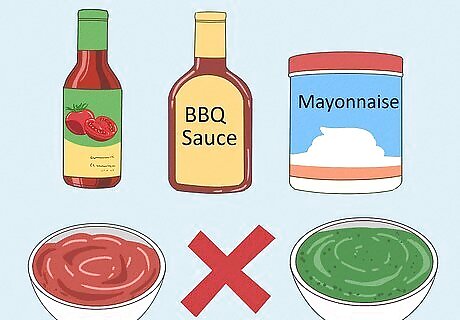
Tomato sauce, jam, and Asian-style sauces are just a few to steer clear of. Many condiments and sauces have some amount of fructose in them, including reduced-fat mayonnaise, pasta sauce, tomato paste, and chutney. If possible, clear these items out of your refrigerator and pantry if you have them on hand. Some condiments, like mayonnaise, tomato sauce, and BBQ sauce, can be enjoyed in small servings that are less than 3 US tbsp (44 mL). Like tomato paste and tomato sauce, ketchup also isn’t recommended for people with fructose intolerance.
Switch to a low-fructose bread.
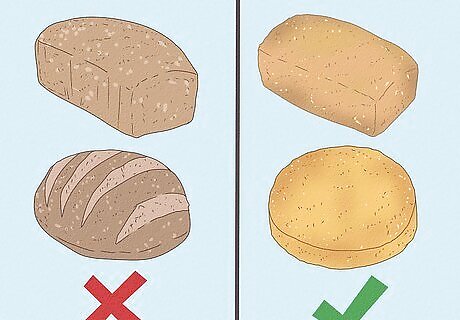
Wheat, rye, and barley bread aren’t good options for a low-fructose diet. Instead, stick with bread that is wheat-free and gluten-free. Cornbread, rice bread, potato flour bread, and spelt sourdough bread are all safe options to choose from. Feel free to change things up with gluten-free or wheat-free pasta, too. Talk to your doctor and ask for their recommendation on how much bread you can eat. Not everyone on a low-fructose diet can tolerate bread, even low-fructose varieties.
Stop drinking high-fructose beverages.
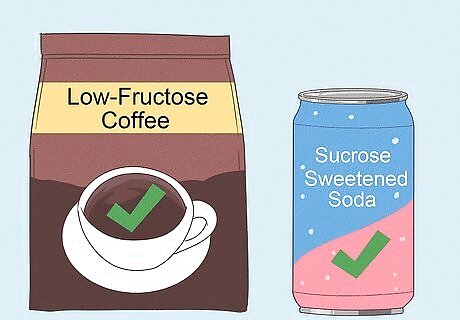
Soda and fruit juice are a few drinks to avoid. If you’d like to add a little variety to your beverage line-up, opt for low-fructose drinks like coffee or sucrose-sweetened soda. Apple juice is especially high in fructose, so try to avoid it if you can. Stick with sugar-free drinks that are pretty low in fake sweeteners like acesulfame k and aspartame.
Steer clear of any high-fructose alcohol.
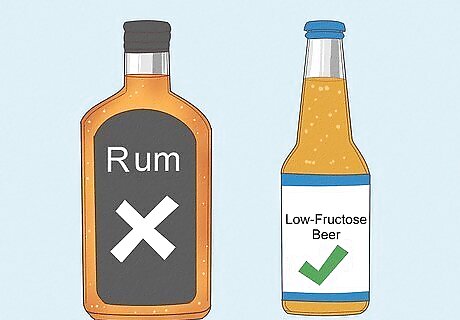
Rum is a big red flag for low-fructose diets. Alcohol can be pretty irritating to your GI system in general, so it’s really best to save it for special occasions. When you do pour yourself a glass, opt for beer, wine, or spirits low in fructose.
Ditch any items with fructose listed on the label.
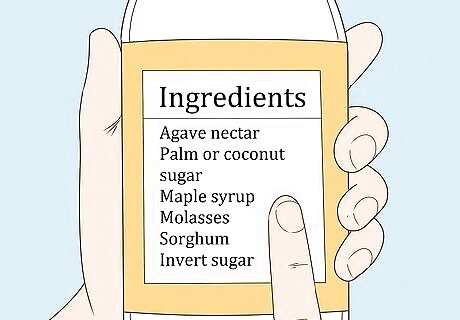
Check the ingredients for things like high-fructose corn syrup (HFCS). Reading food labels is one of the most effective ways to limit and avoid fructose in your diet. The key is knowing what to look for. As you read each food label, scan for a few different fructose-based sweeteners: Agave nectar Palm or coconut sugar Maple syrup Molasses Sorghum Invert sugar
Kick high-fructose corn syrup from your diet.
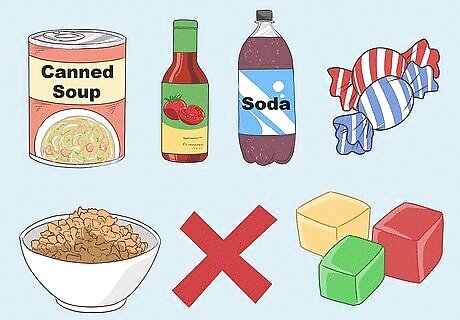
HFCS is an especially unhealthy form of fructose. Commonly found in candy, soda, and processed foods, excess HFCS can lead to serious health concerns like obesity, insulin resistance, and type 2 diabetes. Always avoid this ingredient when you’re grocery shopping, as it can also pop up in unexpected places like: Canned food Cereal Jellies Condiments
Create a meal plan with your doctor.
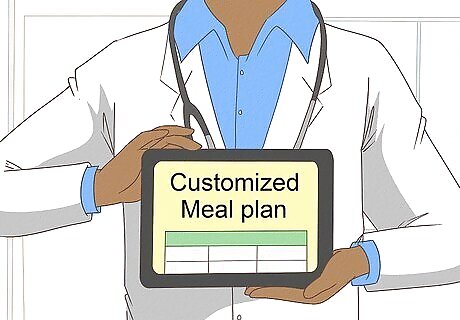
A customized meal plan can cater to your exact level of fructose tolerance. Safe fructose levels vary from person to person, so it helps to ask a doctor or dietician for advice. Schedule an appointment to figure out what you can and cannot eat. Also, ask about the exact amount of fructose you can have per day so you don’t go over. If you’re sensitive to a lot of different foods and ingredients, ask your diet or dietician if you can try a low FODMAP diet. This type of diet limits a lot of triggering foods and ingredients, including fructose.




















Comments
0 comment